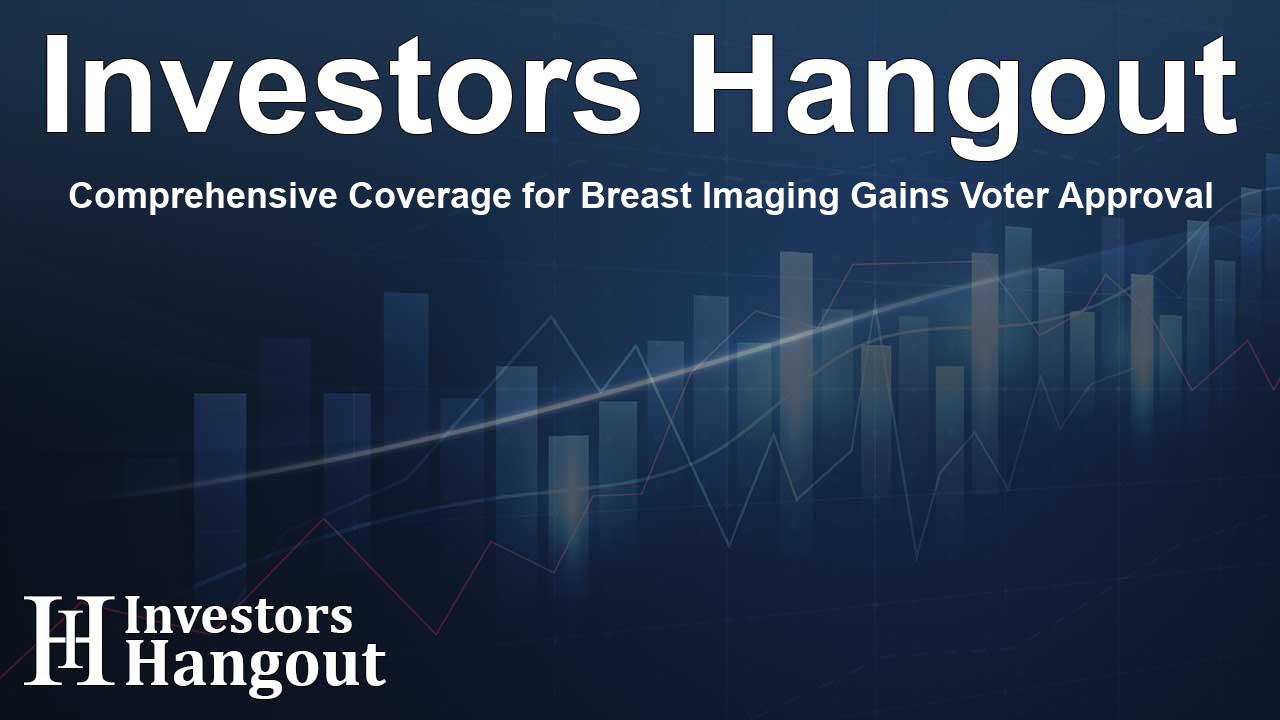Comprehensive Coverage for Breast Imaging Gains Voter Approval

Strong Voter Support for Comprehensive Breast Imaging Coverage
Recent findings illustrate a robust consensus among voters regarding the necessity for health insurers to fully cover all recommended breast imaging procedures. This includes a broader spectrum than just routine mammograms, highlighting an increasing awareness of the importance of early diagnosis when it comes to breast cancer.
Importance of Eliminating Out-of-Pocket Costs
In a recent study, Republican voters showed a significant inclination to advocate for the removal of out-of-pocket costs for breast cancer imaging, asserting that such measures would lead to earlier diagnoses and ultimately save more lives. The commitment to early intervention could dramatically influence health outcomes for many individuals.
Insights from the National Poll
The poll revealed that an overwhelming 90% of participants championed the bipartisan Access to Breast Cancer Diagnosis Act. This critical legislation, referenced as S.1500 and H.R. 3037, mandates private health plans to cover diagnostic and supplemental breast imaging without any financial burden on patients.
Details on Voter Attitudes
Interviewed voters conveyed strong preferences for cost-free coverage, especially in scenarios when additional imaging is required following inconclusive results or when high-risk individuals need supplemental imaging like MRIs and ultrasounds. Specifically, 94% of voters support coverage when further diagnostic imaging is necessitated due to concerning initial results, while 92% back coverage for high-risk patients requiring additional tests.
Public Support for Legislative Changes
Support for the ABCD Act was notably high, with 90% of respondents backing the bill once its provisions were thoroughly described. Voters resonated particularly with its aims to expedite critical answers to women regarding their health, enhancing the chances of successful treatment.
Legislative Impact and Public Opinion
A notable 53% of surveyed participants expressed increased likelihood to vote for Congressional representatives who endorse this vital legislation. This represents a significant shift towards accountability among policymakers regarding health care access for women.
State-Level Initiatives
At least 30 states have initiated movements to remove financial obligations for diagnostic and supplemental imaging. States such as Florida, Massachusetts, New York, Pennsylvania, and Louisiana have reported minimal to no adverse effects on insurance premiums while making these changes.
The Life-Saving Power of Early Detection
Early detection of breast cancer is proven to be life-saving. When breast cancer is identified promptly, the probable treatment outcomes improve drastically, with an estimated survival rate of 98%. Unfortunately, over a million women did not get necessary breast imaging last year due to financial constraints, which is a sobering statistic that highlights the urgent need for policy reform.
Understanding the National Poll
Commissioned by the Alliance for Breast Cancer Policy, this national survey encompassed feedback from 1,000 Republican primary voters. The data was gathered through a combination of phone and SMS/text interviews, emphasizing the urgent need for advocacy and awareness surrounding breast cancer care.
About the Alliance for Breast Cancer Policy
Founded by Susan G. Komen, the Alliance for Breast Cancer Policy comprises 29 advocacy organizations dedicated to pioneering policy innovations that improve breast cancer care. Their collaborative efforts strive to ensure that health care becomes more accessible and affordable for all women.
Frequently Asked Questions
What is the main finding of the recent national poll?
Voters support full insurance coverage for all breast imaging, not just routine mammograms.
What is the ABCD Act?
The ABCD Act mandates private health plans must cover diagnostic and supplemental breast imaging at no cost to patients.
Why is early detection of breast cancer critical?
Early detection increases the chances of successful treatment, leading to a higher survival rate.
How does this legislation affect women in underserved communities?
The legislation aims to expand access to breast imaging for lower-income, rural, and minority women.
What are some of the states leading in this legislative change?
States like Florida, Massachusetts, New York, and Pennsylvania are among those taking steps to eliminate patient costs for imaging.
About The Author
Contact Riley Hayes privately here. Or send an email with ATTN: Riley Hayes as the subject to contact@investorshangout.com.
About Investors Hangout
Investors Hangout is a leading online stock forum for financial discussion and learning, offering a wide range of free tools and resources. It draws in traders of all levels, who exchange market knowledge, investigate trading tactics, and keep an eye on industry developments in real time. Featuring financial articles, stock message boards, quotes, charts, company profiles, and live news updates. Through cooperative learning and a wealth of informational resources, it helps users from novices creating their first portfolios to experts honing their techniques. Join Investors Hangout today: https://investorshangout.com/
The content of this article is based on factual, publicly available information and does not represent legal, financial, or investment advice. Investors Hangout does not offer financial advice, and the author is not a licensed financial advisor. Consult a qualified advisor before making any financial or investment decisions based on this article. This article should not be considered advice to purchase, sell, or hold any securities or other investments. If any of the material provided here is inaccurate, please contact us for corrections.
